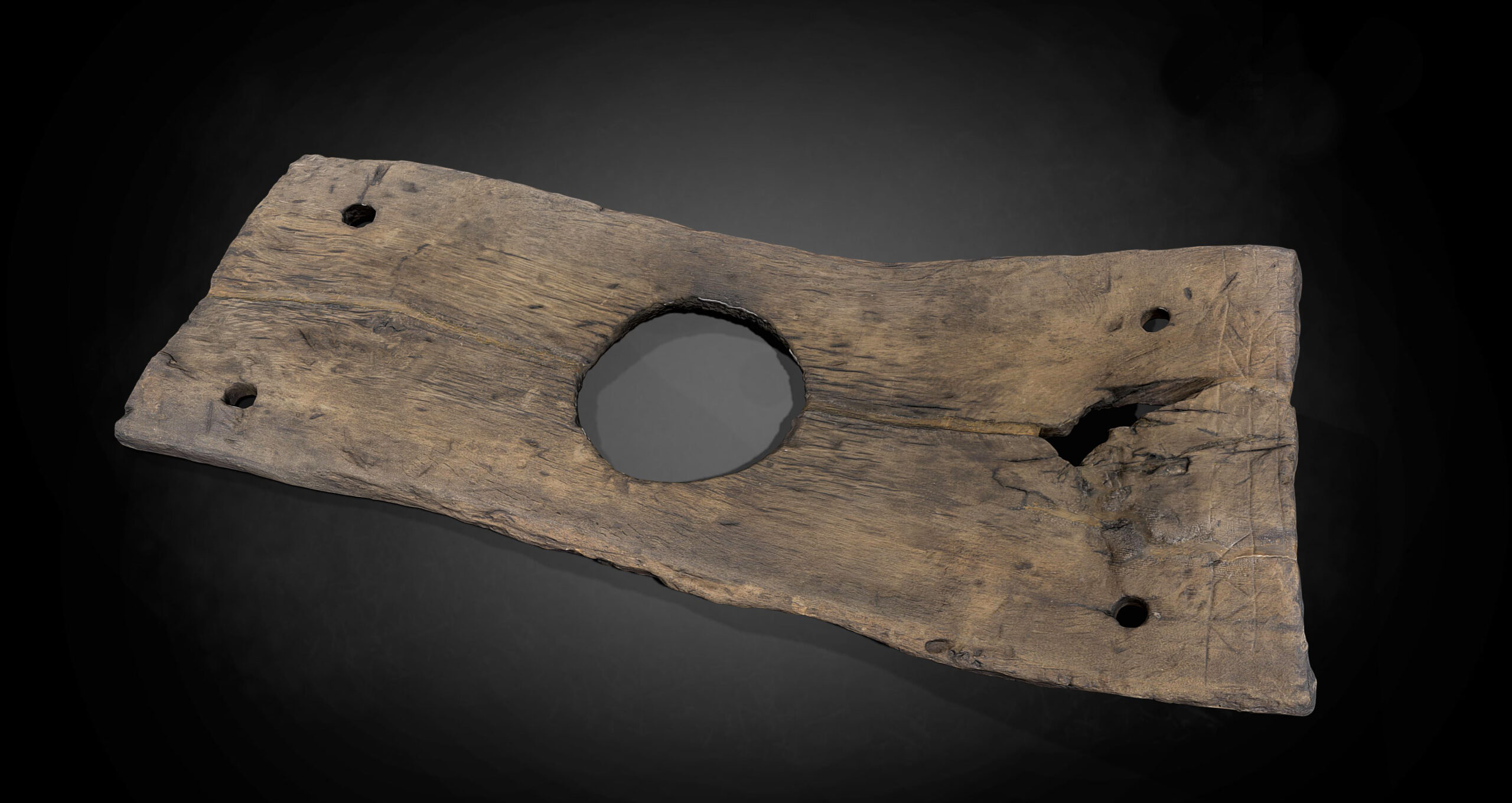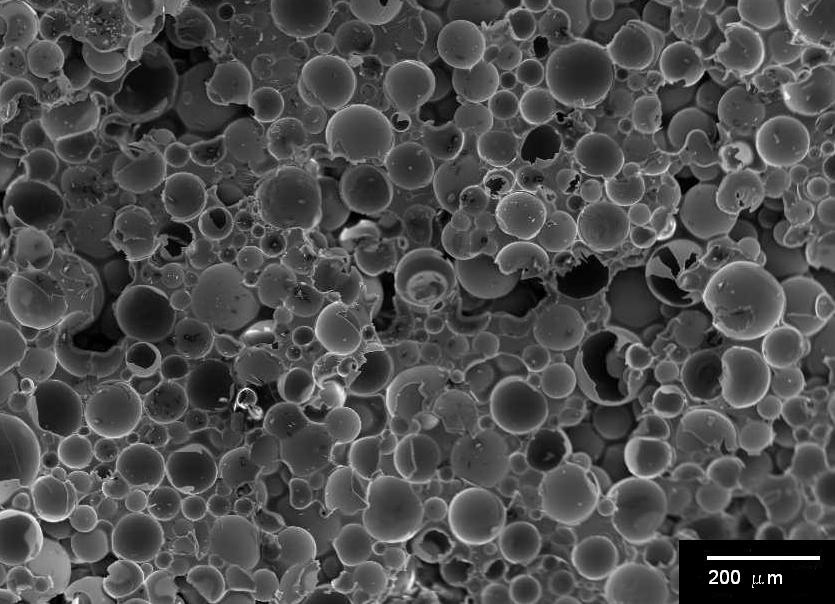Sitting Pretty in Medieval Perth
This medieval toilet seat was discovered during excavations in Kirk Close, Perth, in 1979. AOC’s conservators recently gave it a little TLC in advance of it going on display in the new Perth Museum.
This wooden toilet seat was found during the 1979 excavations in Kirk Close, Perth. It was found resting on a timber frame over a cess pit, leaving us in no doubt about its function! It is thought to date to the late 13th or early 14th century.
Along one edge of the upper surface of is a band of decorative graffiti: chevrons and diamonds. These were most likely incised into the wood with a knife by someone whiling away the time while using the facilities, rather than being a feature of the object’s original design.
AOC is working with Culture Perth and Kinross to prepare hundreds of objects for display in Perth’s new museum. Some of the artefacts will require lots of love to get them museum-ready, while others just need a clean to ensure they are in tip-top condition before going to their new home.
This project is funded by the Museums Galleries Scotland Museum Development Fund.
Long before the toilet seat came to AOC’s conservation lab, it had been previously conserved. The seat was split in two along its length at the time of discovery, so previous conservators joined the two pieces together using a gap filler. The filler was then painted to match the colour of the wood, but was clearly visible in the middle running along the entire length of the seat. A few other small cracks had also been filled in the past.
However, the gap filler had started to detach from the wood and there were multiple large cracks between the wood and filler. This could be either due to the weight of the object, due to changes in humidity, or due to old filler staring to degrade – likely a combination of the three.
Despite appearances, the old repair was sound, and removing it might only have caused damage to the object, so AOC’s conservators instead worked to stabilise the cracks and prevent further cracking. Using a micropipette, adhesive was inserted into the cracks to strengthen the surrounding area. New gap filler with glass microballoons was used to fill the larger cracks. The new filler was then painted by hand to match the colour of the wood and the old repair.
Photogrammetry
The toilet seat was recorded using photogrammetry and a 3D model created from the resulting data. The graffiti doesn’t show up particularly well in photographs, but can be visually enhanced in the photogrammetric model thanks to the option to alter the direction of the light source.
Microballoons in Conservation
Hollow glass microballoons are often used in conservation as a bulking agent or thickener in resins and castings. They are tiny, hollow glass spheres which are mixed into a filler such as epoxy resin. The mixture can be inserted into cracks, for example, to fill the gap and strengthen the object. The filler can be smoothed and painted to match the object for an unobtrusive finish.








